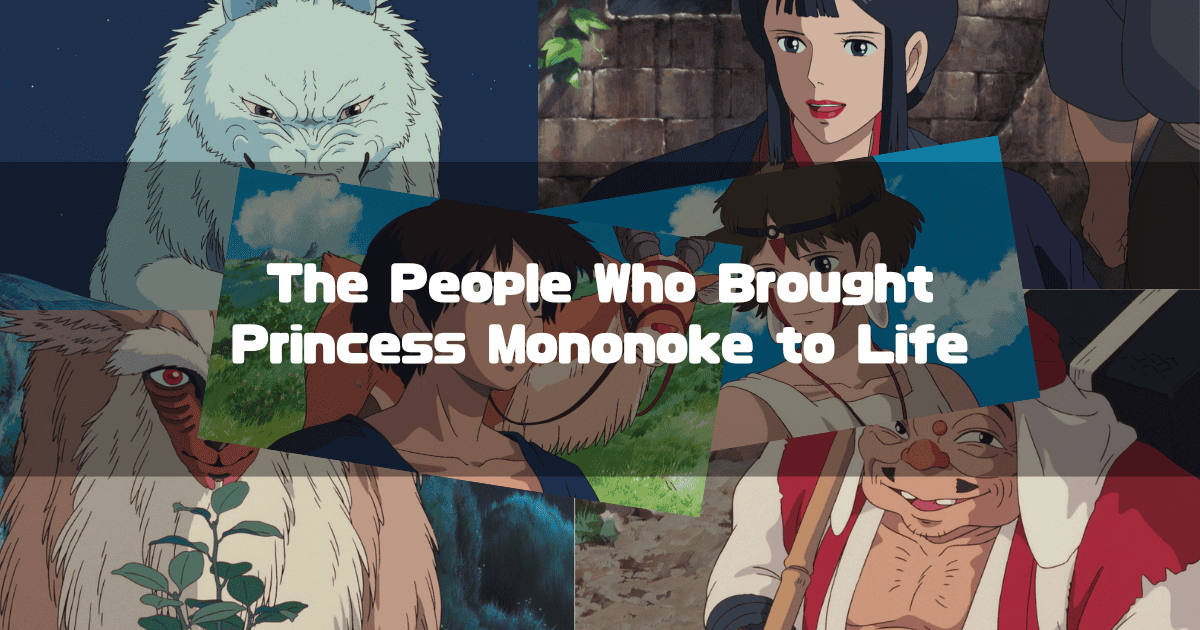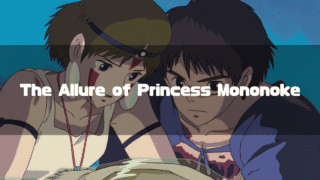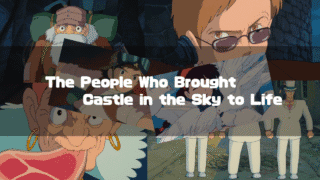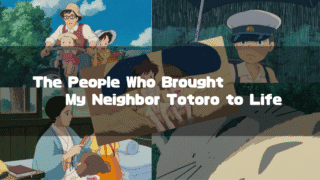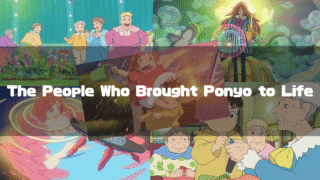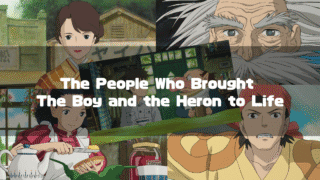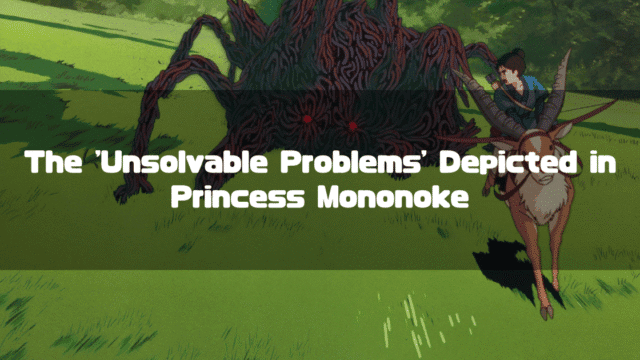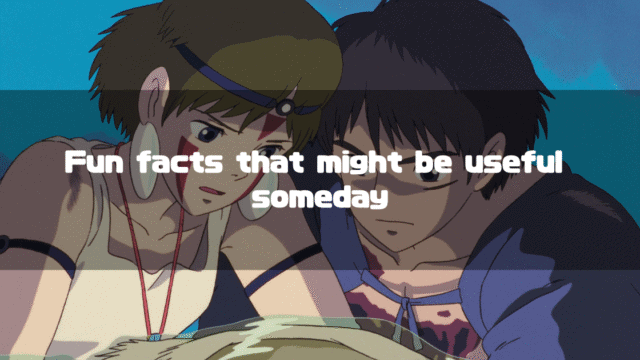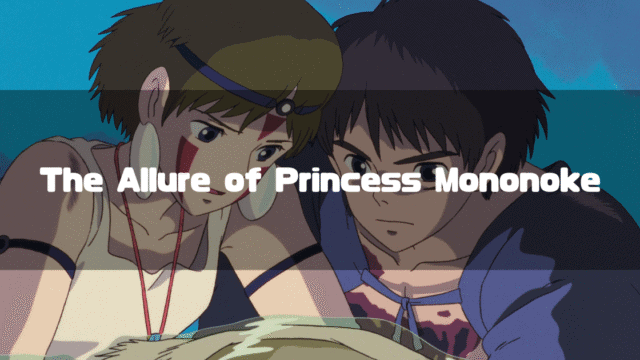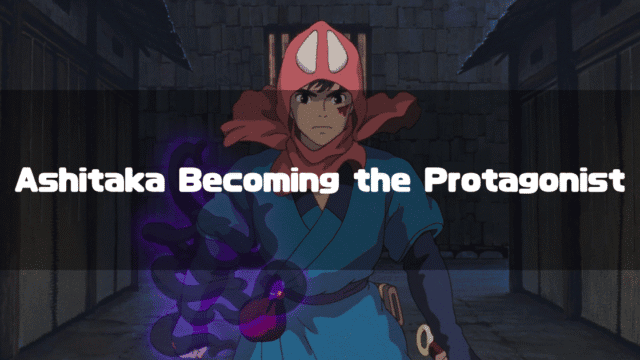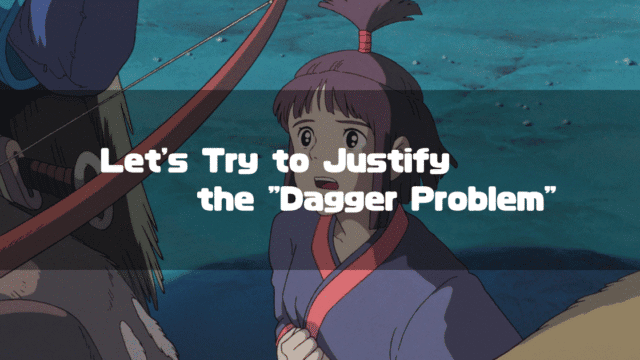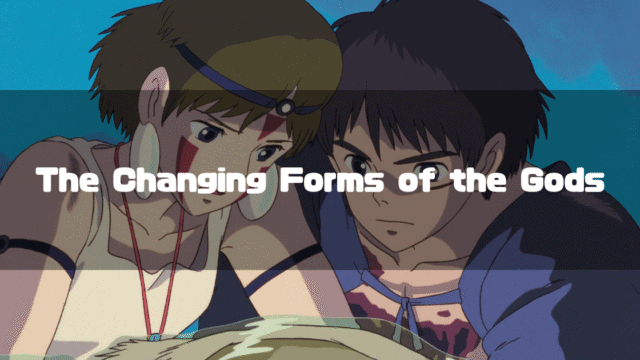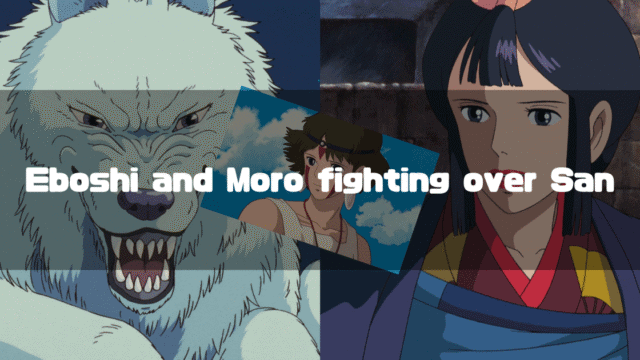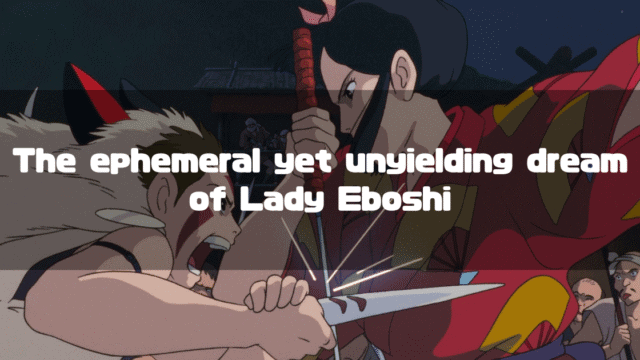Princess Mononoke(Official Studio Ghibli Website) is a 1997 animated feature film directed by Hayao Miyazaki.
This time, I’d like to reflect on the appeal and story of Princess Mononoke by looking back at its characters and their voice actors. What kind of people were the characters in Princess Mononoke?
Please be aware that the following text contains sudden spoilers.
*This article is an English translation of the original Japanese article, 【もののけ姫】登場人物&声優情報一覧とキャラクター考察そして人物相関図.
Let an AI walk you through the highlights of this post in a simple, conversational style.
- Princess Mononoke (1997) Main Characters & Voice Actors
- Princess Mononoke (1997) Character Map
- Princess Mononoke (1997) Character Details and Analysis
- Ashitaka | Voice Actor: Billy Crudup
- San | Voice Actor: Claire Danes
- Lady Eboshi | Voice Actor: Minnie Driver
- Moro | Voice Actor: Gillian Anderson
- Okkoto | Voice Actor: Keith David
- Forest Spirit (Night-Walker)
- Jigo | Voice Actor: Billy Bob Thornton
- Kohroku | Voice Actor: John DeMita
- Gonza | Voice Actor: John DiMaggio
- Toki | Voice Actor: Jada Pinkett Smith
- Wolf Clan | Voice Actor: (N/A)
- Hii-sama | Voice Actor: Debi Derryberry
- Nago | Voice Actor: John DiMaggio
- Head Ox-driver | Voice Actor: John Hostetter
- Leader of the Lepers | Voice Actor: (N/A)
- Kiyo | Voice Actor: (N/A)
- Jibashiri | Voice Actor: (N/A)
Princess Mononoke (1997) Main Characters & Voice Actors
| Name | Age | Voice Actor |
|---|---|---|
 Ashitaka | 17 | Billy Crudup |
 San | 15 | Claire Danes |
 Lady Eboshi | ?[1] | Minnie Driver |
 Moro | 300 | Gillian Anderson |
 Okkoto | 500 | Keith David |
 Forest Spirit | ?[1] | – |
 Jigo | ?[1] | Billy Bob Thornton |
- [1]
- Although various theories exist, no clear setting for their age has been officially released.
Princess Mononoke (1997) Character Map
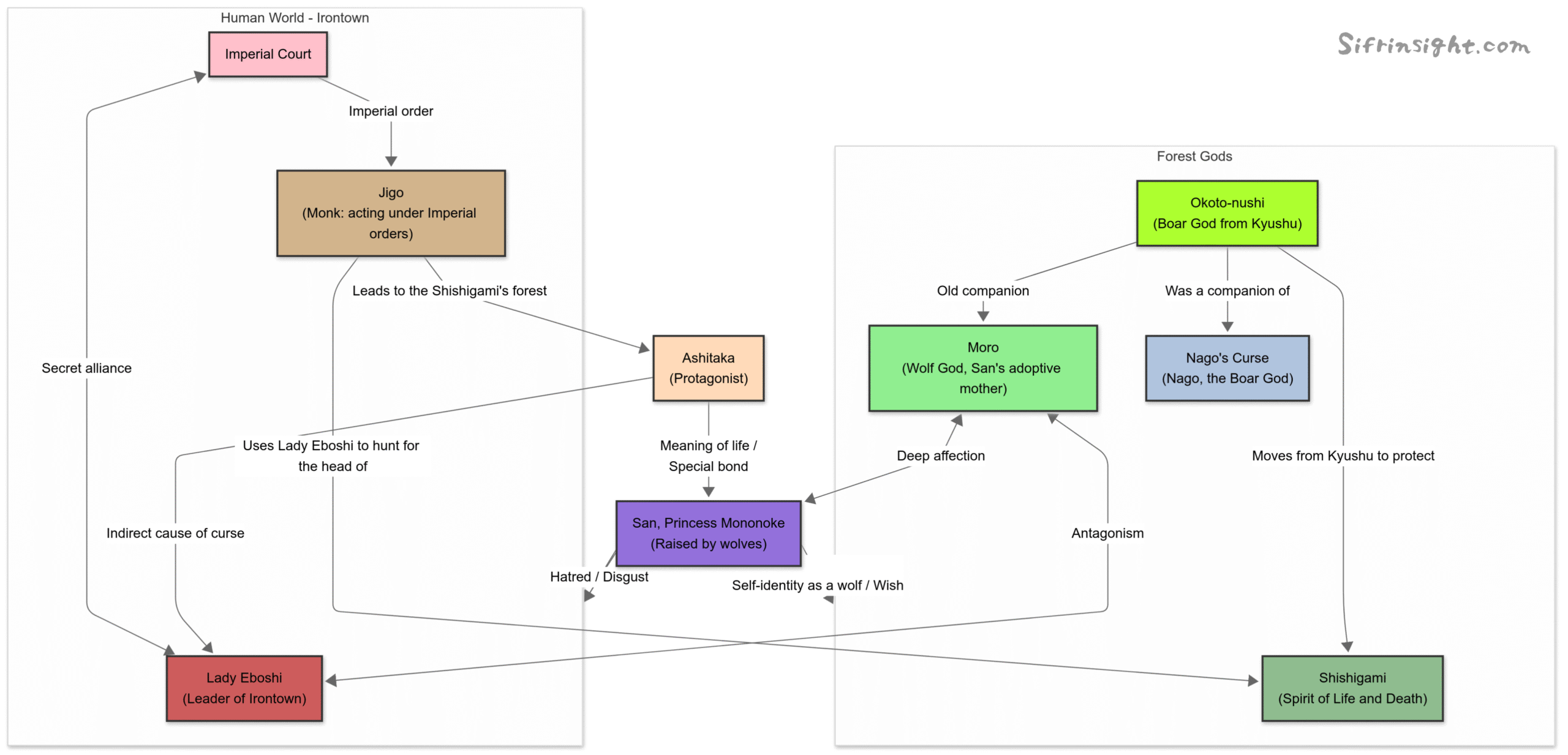
A Tatarigami (a curse god) attacks the home village of the protagonist, Ashitaka. He then embarks on a journey to break the curse he received during the assault.
From a man named Jigo, Ashitaka learns of the existence of the “Shishigami” (the Great Forest Spirit). He heads to the Shishigami’s forest and meets Lady Eboshi, the leader of Irontown (a settlement that practices tatara iron smelting).
Princess Mononoke (1997) Character Details and Analysis
Ashitaka | Voice Actor: Billy Crudup
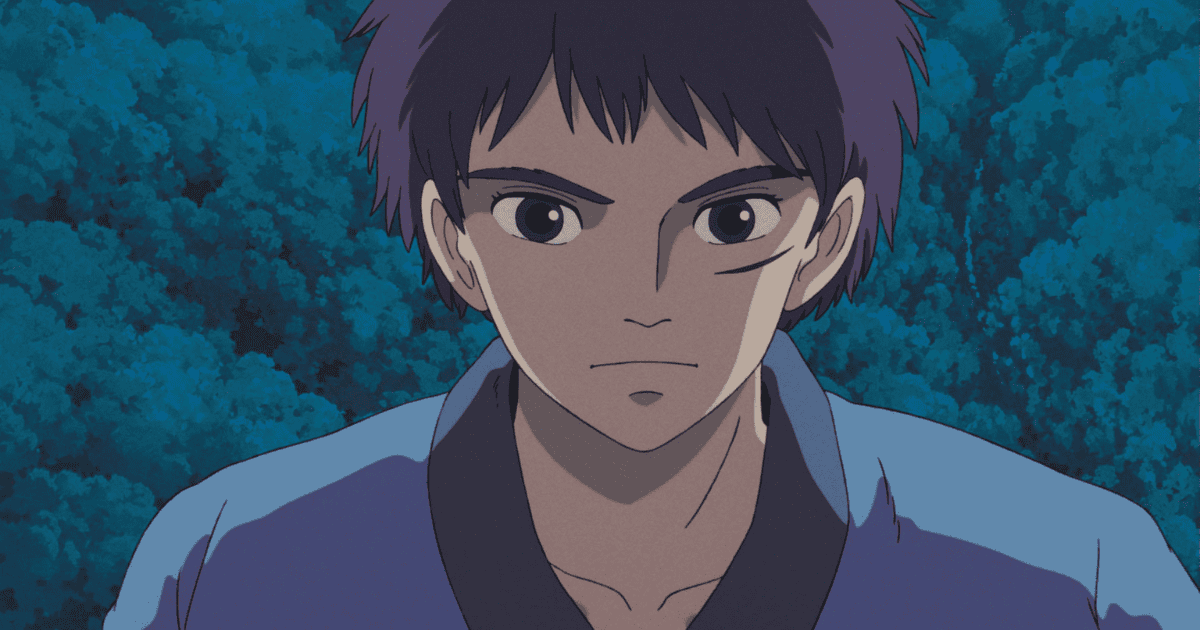
Ashitaka’s Basic Information
The protagonist of the story, 17 years old. He lives in a village of the last of the Emishi people in the Tohoku region. Princess Mononoke begins when a Deamon attacks Ashitaka’s home village.
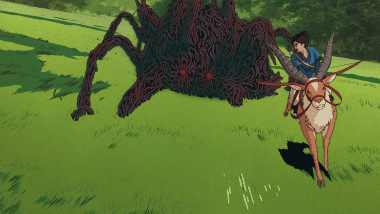
Ashitaka successfully defeats the Deamon. However, in the process, his right arm is cursed, and for this reason, he is exiled from his village. Perhaps the fact that we most overlook when watching Princess Mononoke is this fact of his “exile.”
The villagers deeply regret losing Ashitaka, their future leader, and because Ashitaka leaves the village so readily, we fail to notice the harshness of the situation. But the truth is, Ashitaka can never return to that village.
● Ashitaka Sheds a Tear Only Once – A Crucial Paragraph in Princess Mononoke
For such an Ashitaka, the existence of the “Forest Spirit” he heard about from Jigo must have been nothing short of a gospel. To rephrase what Ashitaka heard while eating with Jigo:
By the way, Ashitaka, I heard there’s a hospital called the “Forest Spirit Clinic” far, far to the west of here, and the “Dr. Forest Spirit” there is a great physician. Maybe your illness can be cured there.
This would be the gist of it. The first “destination” Ashitaka found on his journey west, which had no direction or hope, was the “Forest of the Forest Spirit.”
However, the “Forest Spirit” did not lift Ashitaka’s curse. In other words, Ashitaka was told the following by “Dr. Forest Spirit”:
Ashitaka… well, it’s not about whether the illness can be cured or not, but I think what’s important is to think about “how to live from now on.”
Thinking of Ashitaka’s feelings when he was told this by the “Forest Spirit,” one cannot help but cry. In fact, Ashitaka himself, faced with the reality that the Forest Spirit would not lift his curse, sheds his one and only tear in this story.
And, before and after this tear, Ashitaka’s purpose in life clearly changes.
Before shedding this tear, Ashitaka was on a “journey for himself.” After this tear, Ashitaka is on a “journey for someone else.”
To rephrase the goody-two-shoes expression “a journey for someone else” into an even more goody-two-shoes expression, one could say it is a “journey for the peace of the world.” On the surface, Ashitaka acts this way, but… the truth is undoubtedly that Ashitaka’s principle of action becomes “to live for San.”
Princess Mononoke as “Ashitaka’s Journey” begins with the tragedy of being exiled from his home, and as a result, it becomes a story of finding a reason to live named “San” and discovering a new world for himself in “Tatara Ba.”
In other words, if we focus on Ashitaka, we can say that Princess Mononoke is, just barely, a happy ending.
● The Problem of Kaya’s Dagger
Focusing on Ashitaka and thinking of his plight, we can have infinite sympathy for him. However, Ashitaka causes an incident that creates a slight “unease” in our hearts. That is, the “incident where he gives the dagger he received from Kaya to San.”
I still remember how I felt when I saw it in the theater. As a child, I seriously thought, “Huh? You’re giving it away?”
Moreover, the fact that San, who received the dagger, joyfully turns it into her own necklace accelerated that “unease.”
However, now that I’m older, I feel I can rationalize Ashitaka’s actions, and I actually think it’s a good scene. I’ve summarized my thoughts on this in the following article:
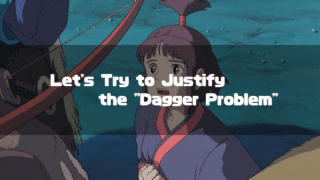
What do you all think of Ashitaka’s actions?
San | Voice Actor: Claire Danes
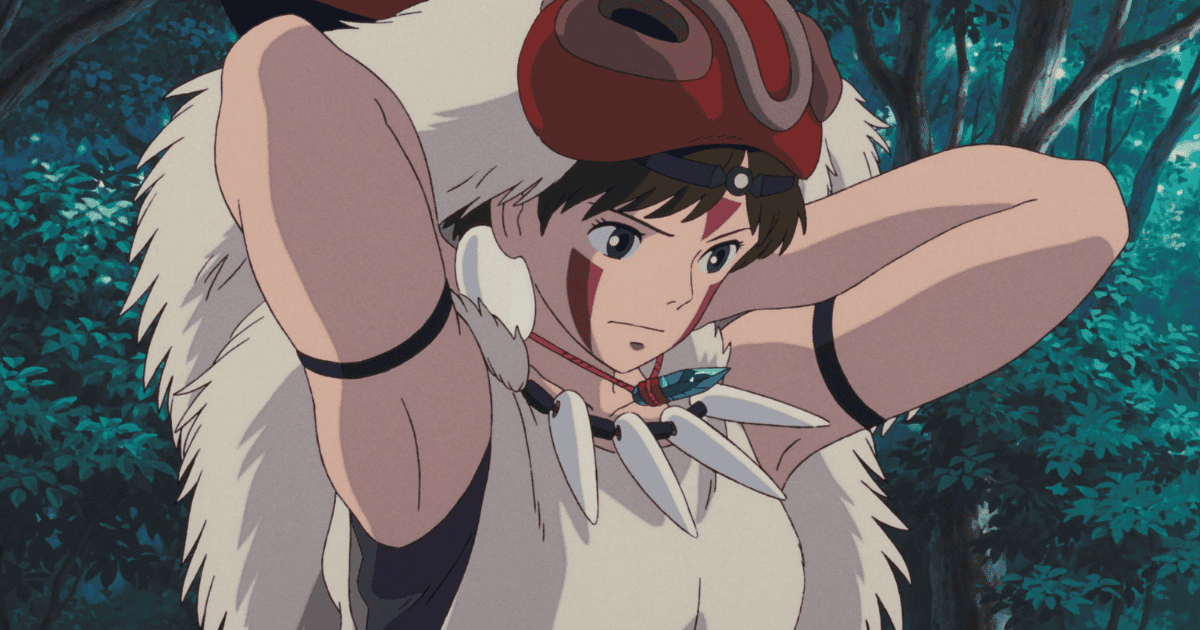
San’s Basic Information
The heroine of Princess Mononoke, 15 years old. A human raised by Moro. In the film, Moro told Ashitaka:
I caught her human parents defiling my forest. They threw their baby at my feet as they ran away.
San held a fierce hostility towards humans and was aiming for Lady Eboshi’s head to protect the Forest of the Forest Spirit.
However, for some reason, San takes a very favorable attitude towards Ashitaka. San said the reason was “because the Forest Spirit saved him,” but it’s unusual that she even thought of taking him to the Forest Spirit in the first place.
For example, if someone else had stopped San’s attack on Tatara Ba, they might have killed him instead of taking him to the Forest Spirit. No, they would have killed him.
In the end, it seems that San was won over by Ashitaka’s words, “You are beautiful.”
One might think she’s too easy, but she probably had never been told such a thing in her life. If you put yourself in her shoes, it might not be so unreasonable. She is 15 years old.
● Princess Mononoke for San
Now, as I mentioned earlier, I believe that “for Ashitaka, ‘Princess Mononoke'” appears to be a “barely happy ending.” But what about Princess Mononoke for San?
At the end of the story, the “Forest of the Forest Spirit” as a primeval forest, which San tried so hard to protect, suffers a major blow.
Even so, it makes a slight recovery… but we know that if we want to see a “primeval forest,” we have to go to limited places like Yakushima, Shirakami-Sanchi, and Shiretoko. In other words, the “Forest of the Forest Spirit” was truly lost.
Doesn’t this fact mean that San’s story begins from that ending?
The story of Princess Mononoke as Ashitaka’s story was about overcoming the hardship of receiving a curse and being exiled from his village.
San also suffered the hardship of being abandoned by her parents as a baby and being raised by Moro, but it seems that her real hardship begins from that ending. After that ending, San is forced to:
- Face the fact that the “Forest of the Forest Spirit” was lost,
- Still be unable to abandon her hatred for humans,
- Be unable to abandon her feelings for Ashitaka,
- And live with the wolf clan in a forest that has lost its “god.”
San will have to endure the suffering of loneliness that Ashitaka endured when he was forced to journey west with Yakkul without a destination.
In the end, it becomes clear that the question of whether Princess Mononoke is a happy or sad ending for San is meaningless in itself.
I can only hope that just as San was a gospel for Ashitaka, Ashitaka was also a gospel for San.
After all, Princess Mononoke is a tough story.
● The Red Markings on San’s Face are Tattoos
San has impressive red markings on her forehead and cheeks. Those are not paint, but actually tattoos.
This fact is clearly stated as “crimson tattoos” in the narration of the production documentary “How Princess Mononoke Was Born.”
However, there is no clear evidence as to when she got those tattoos.
When on earth did she get them?
Lady Eboshi | Voice Actor: Minnie Driver
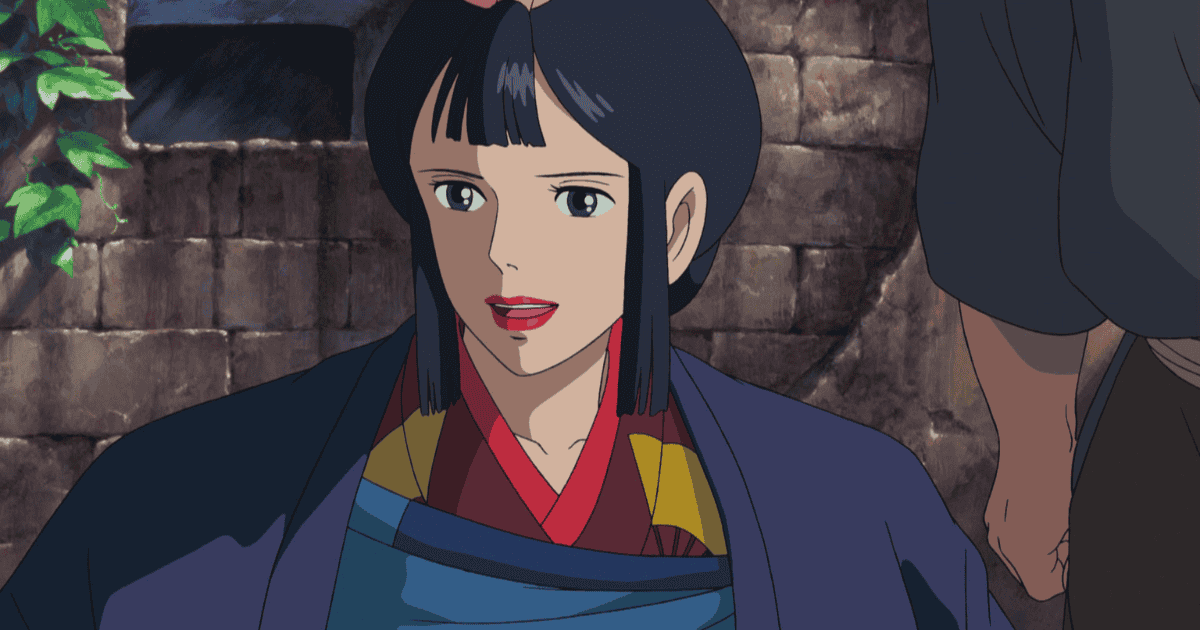
Lady Eboshi’s Basic Information
The leader of “Tatara Ba” (Irontown), where Ashitaka arrives. She is also the person who told Ashitaka, who was told to “get out” despite saving his own village, “Don’t show off your petty misfortune so arrogantly!”
Although her words may seem a bit too harsh, Lady Eboshi herself has a past of being forced to be the wife of a Wak? (pirate) chieftain, and she conspired with Gonza to kill the chieftain and escape from the Wak?. Considering her days of humiliation and her escape, Lady Eboshi’s words might not have been unreasonable.
● The Dream Lady Eboshi Saw
While commanding the ironworks at Tatara Ba, Lady Eboshi was also improving and producing firearms (ishibiya) in her “secret garden.” The firearms Eboshi brought with her to Tatara Ba were from the Ming Dynasty and were sufficiently effective, but it seems Eboshi was plotting to make them even more sophisticated.
For what purpose?
Of course, various reasons can be considered, but I personally think it was to realize the dream Lady Eboshi saw. I have summarized my thoughts on this in the following article:
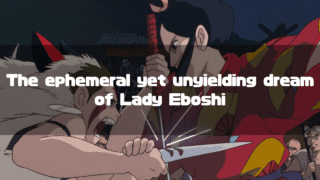
What on earth was Lady Eboshi trying to achieve?
● The Mystery of Lady Eboshi’s Sympathy for San
Throughout Princess Mononoke, Lady Eboshi shows seemingly contradictory judgments of cruelty and mercy. While she easily abandons the men who fell to the bottom of the valley at the beginning of the story, she shows a somewhat sympathetic attitude towards San.
I have summarized the reasons for Lady Eboshi’s strange judgment in the following article:
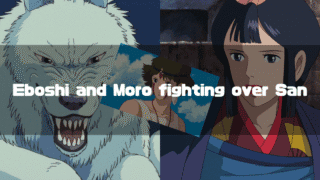
How did San appear in Lady Eboshi’s eyes?
Moro | Voice Actor: Gillian Anderson

Moro’s Basic Information
A wolf god who lives in the Forest of the Forest Spirit and seeks Lady Eboshi’s head. She is about 300 years old.
While in conflict with humans, she also shows the kindness of carefully raising San, the baby who was abandoned by humans who feared her.
However, “conflicting with humans” and “raising San” are not things that can be easily reconciled, and one would normally use the expression “contradiction.”
I have summarized this contradiction in the following article:

What were Moro’s feelings as she raised San?
● The Magnanimous Moro
The most famous scene involving Moro is probably when she shouts at Ashitaka, “Silence, boy!”
Just before that, Ashitaka powerfully says, “Set her free. She is human.” When watching normally, it seems like one of Ashitaka’s famous lines, but from the perspective of Moro, who raised San after she was abandoned by her own parents, it would be something like, “What are you talking about!?”
Nevertheless, the reason she ended it with a single shout of “Silence, boy!” was probably because she knew that San liked Ashitaka. Seeing San diligently nursing the injured Ashitaka, Moro might have thought, “So San is human after all.”
It’s a very sad story, but the single phrase “Silence, boy!” was probably her final resistance against the fact she didn’t want to admit: “In the end, San is human.”
In the end, this scene, which seems to show Moro’s true feelings, is actually a scene where we can get a glimpse of her magnanimity.
This kind of “duality” seems to be one of the themes of Princess Mononoke.
● Moro and Okkoto were “close.”
A fact that is almost impossible to notice just by watching Princess Mononoke is that Moro and Okkoto were once “close.” In other words, they were in a romantic relationship.
While this is a fact that is hard to believe, it is confirmed in the documentary “How Princess Mononoke Was Born,” where Director Miyazaki mentions it during the voice recording of the scene where Moro and Okkoto meet.
I’m curious about what their love story was like, but I’m more curious about the region where they had such a romance.
What kind of romance did they have?
Okkoto | Voice Actor: Keith David
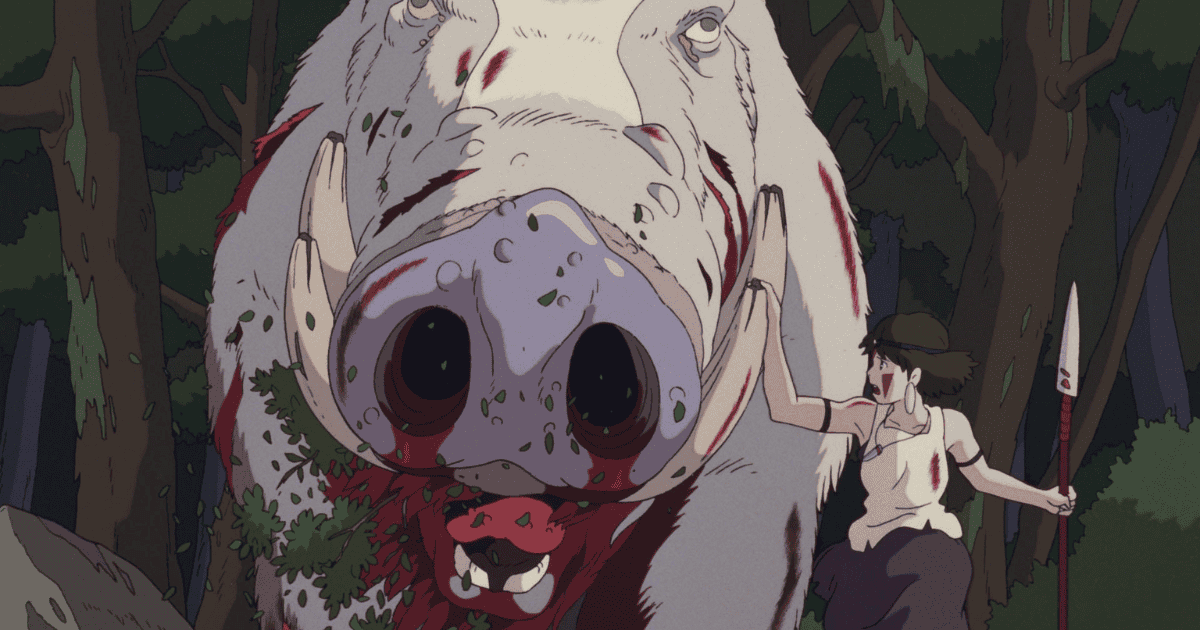
Okkoto’s Basic Information
A boar god who came to the Forest of the Forest Spirit from Kyushu (Chinzei).
The fact that he came to the Forest of the Forest Spirit with his clan and said, “Even if my entire clan is destroyed, I will make the humans pay,” probably means that they were completely defeated in the battle against humans in the Kyushu region.
Also, seeing that Nago the Boar God was routed in the Forest of the Forest Spirit, it seems that the role of “protecting the mountains” fundamentally belonged to the boars.
That is why they could not accept that Nago was routed and became a Deamon.
● Was “close” with Moro
As mentioned above, Okkoto was once “close” with Moro… but since Okkoto is the lord of Kyushu (Chinzei) and cannot come to the Forest of the Forest Spirit without crossing the sea, how did he meet and fall in love with Moro…?
This is more of a fantasy than an imagination, but,
Once, a young Okkoto, while having parents who ruled the Kyushu region, was in a position of relative freedom. Okkoto used this last bit of freedom to go on a journey. In the renowned “Forest of the Forest Spirit,” he met the young Moro. The two fell in love, but Okkoto, who had to reign as the lord of his homeland, left Moro behind and returned home.
Perhaps there was a romance like that. In a way, Okkoto did the exact opposite of Ashitaka.
That is, Ashitaka lost the days he should have had with Kaya and met San in the Forest of the Forest Spirit, while Okkoto enjoyed the days he should have had with Moro, returned to his homeland, had the family he should have had, and at the end of his life, came to see his old flame.
I think the one Ashitaka should have hated the most was Okkoto.
Forest Spirit (Night-Walker)
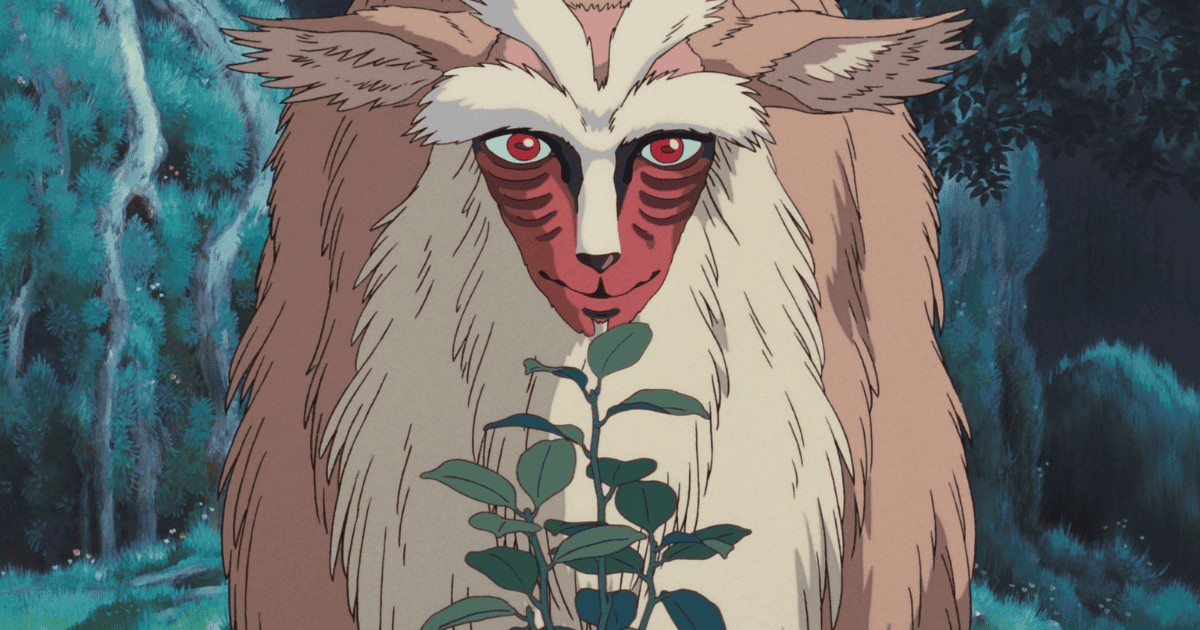
Forest Spirit’s Basic Information
A god who lives in the “Forest of the Forest Spirit,” which bears its name. It has countless tree-like antlers, a face like a monkey (human), and a body like a boar. In other words, it has the appearance of a collection of life in this world.
It also has the transcendent ability to take and give life.
Ashitaka went to the “Forest of the Forest Spirit” hoping that the Forest Spirit would lift the curse on his right arm, but in the end, the curse was never completely healed.
Also, Jigo, commissioned by a noble personage, sought its head for its power of “immortality,” and Eboshi also helped him through a secret pact with the “Imperial Court.”
At night, the Forest Spirit transforms into a giant “Night-Walker” (Didarabocchi). Director Miyazaki depicted the Night-Walker as “night itself,” and its huge figure looks as if the night sky is moving.
Jigo | Voice Actor: Billy Bob Thornton
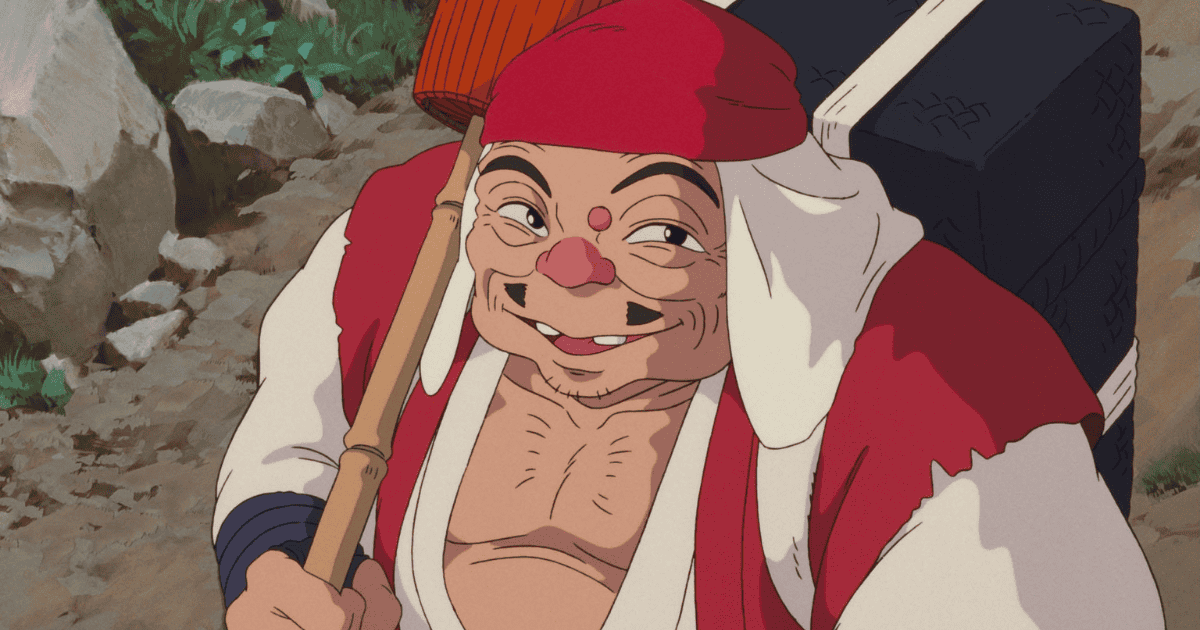
Jigo’s Basic Information
At the beginning of the story, he is the person who gives Ashitaka the hint of the “Forest of the Forest Spirit” when Ashitaka shows him the iron ball from the firearm that turned Nago the Boar God into a Deamon.
Although Ashitaka’s curse was never lifted, considering that he was able to find a new home in “Tatara Ba” and meet San, it can be said that he provided the greatest assistance in Princess Mononoke.
However, it should be recognized that Jigo, from the moment he first met Ashitaka, must have been fully aware that there was some kind of answer in the “Forest of the Forest Spirit,” and his cunning in hiding this and giving only a hint should be acknowledged.
● The Mysterious Organization “Shish?-ren”
Jigo is a member of a mysterious organization called “Shish?-ren” and displays superhuman agility in the film. Since he was aiming for the Forest Spirit’s head under an imperial order, it seems that “Shish?-ren” is an organization directly under the Emperor’s control, but there is no information in the film to confirm anything about “Shish?-ren.”
However, in the documentary “How Princess Mononoke Was Born,” an image board is shown where people who seem to be members of “Shish?-ren” are carrying a Ming monk in a palanquin.
Perhaps the initial concept was that it was an organization based in the Ming Dynasty.
Kohroku | Voice Actor: John DeMita
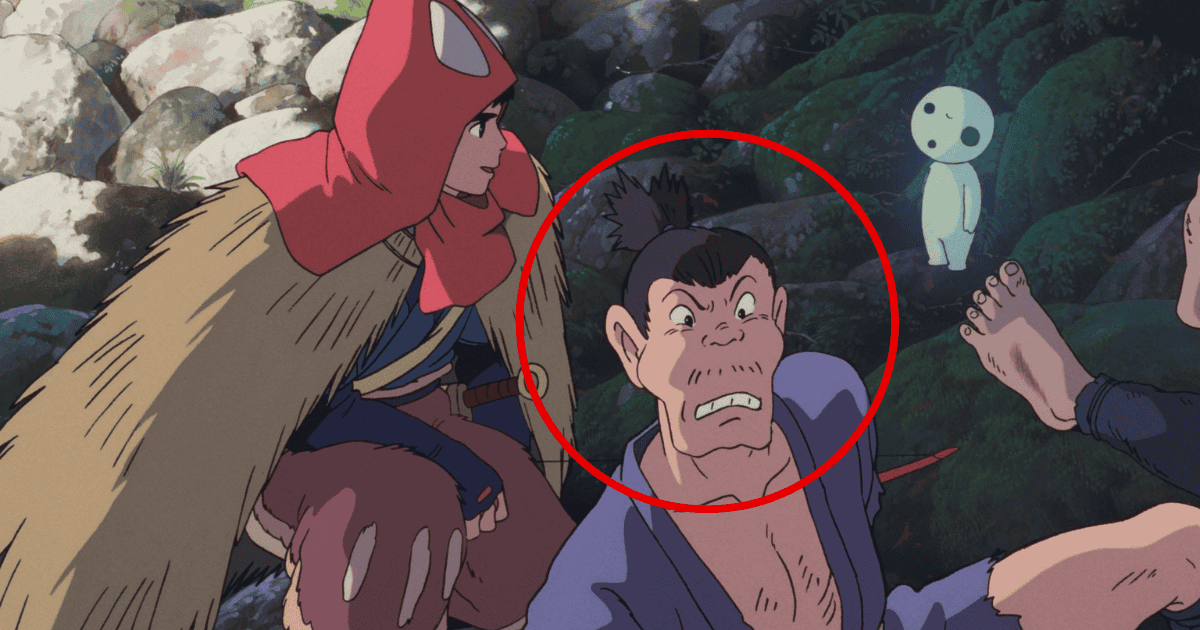
Kohroku’s Basic Information
A character who falls off a cliff during Moro’s attack at the beginning of the story. He is miraculously found by Ashitaka and his life is saved.
Also, due to this heroic act, Ashitaka is generally well-liked by the people of “Tatara Ba.”
In the end, Ashitaka decides to live in “Tatara Ba,” and he was probably accepted very favorably.
Gonza | Voice Actor: John DiMaggio
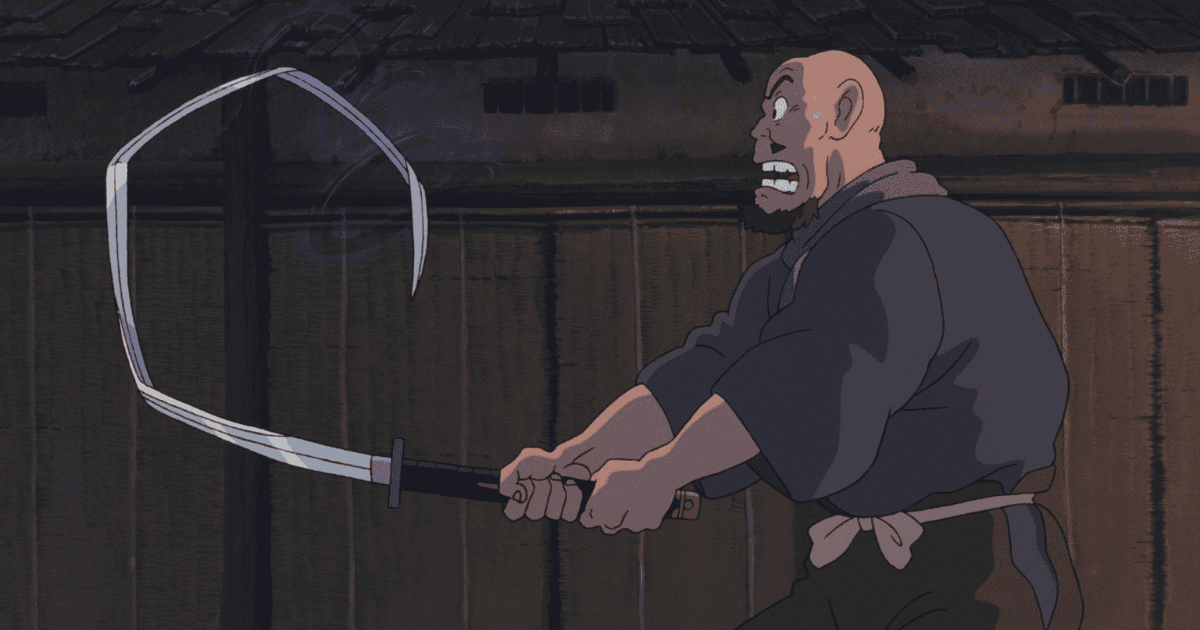
Gonza’s Basic Information
Lady Eboshi’s aide. He is a large man with a stern face. However, in Princess Mononoke, he serves as comic relief, and there is a structure where you can strangely feel relieved when Gonza appears.
Gonza has been Lady Eboshi’s subordinate since her time with the Wak?, showing that he is a loyal man.
He probably has some skill with a sword, so I would have loved to see his bravery.
Toki | Voice Actor: Jada Pinkett Smith
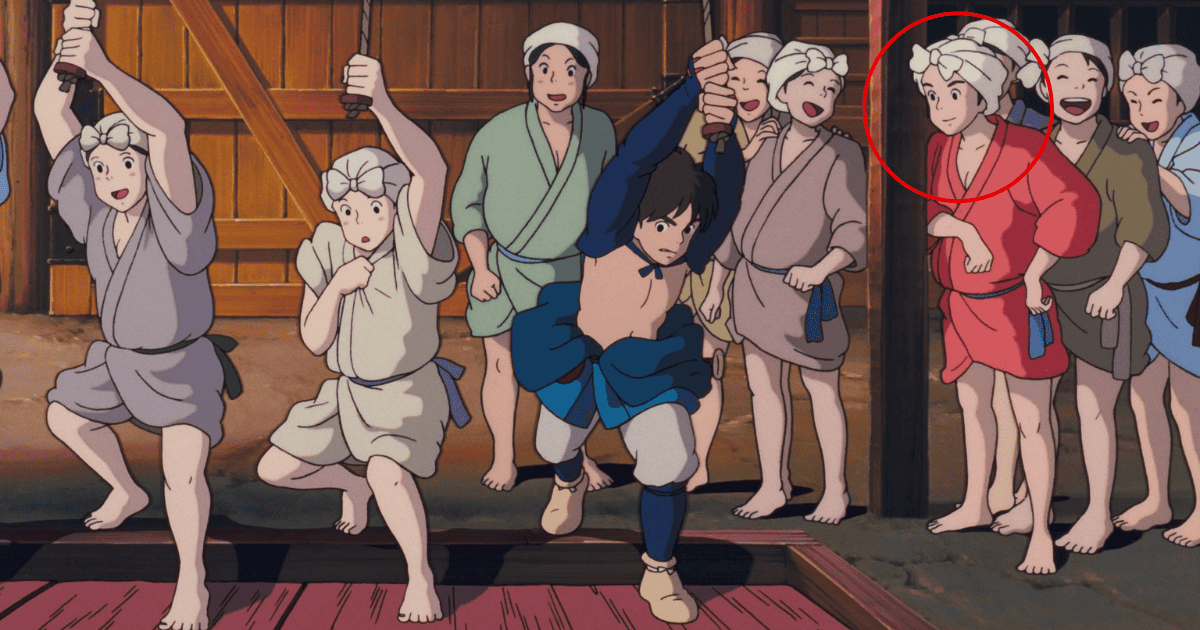
Toki’s Basic Information
Kohroku’s wife. Whether it’s her own temperament or due to the situation in the female-dominated society of Tatara Ba, she is a strong-willed woman and has the feel of a so-called “strong-minded mother.”
In the film, she is depicted commanding the women of Tatara Ba, showing that she also has excellent leadership skills.
Wolf Clan | Voice Actor: (N/A)
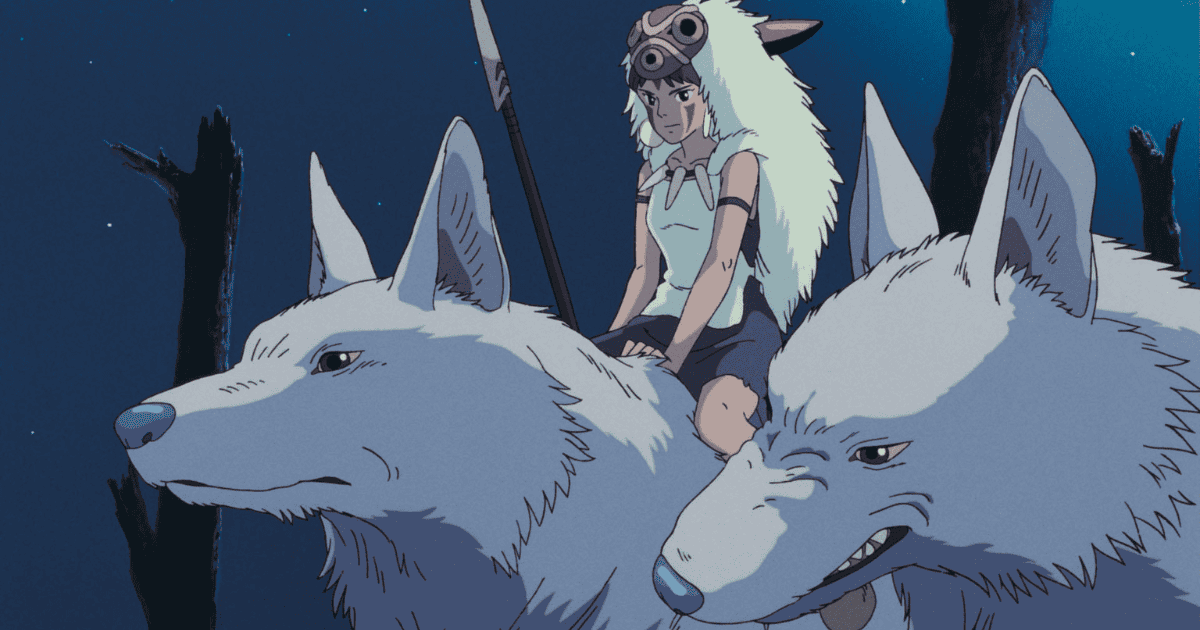
Wolf Clan’s Basic Information
They are Moro’s children, which makes them San’s non-blood-related siblings.
They are clearly smaller than their mother Moro, but it is unknown whether this is a manifestation of the phenomenon that Okkoto talked about, where “the clan gets smaller,” or if they will simply grow larger over time. Personally, I think that’s as big as they’ll get.
What is unforgettable about these two wolves is their single line, “Can we eat him?”
When I saw Princess Mononoke in the theater, I was in the upper grades of elementary school, so I didn’t laugh that much, but I did chuckle, and the younger children in the theater laughed properly.
One of Hayao Miyazaki’s great strengths is this. In the scenes where he tries to make people laugh, we definitely laugh.
Hii-sama | Voice Actor: Debi Derryberry
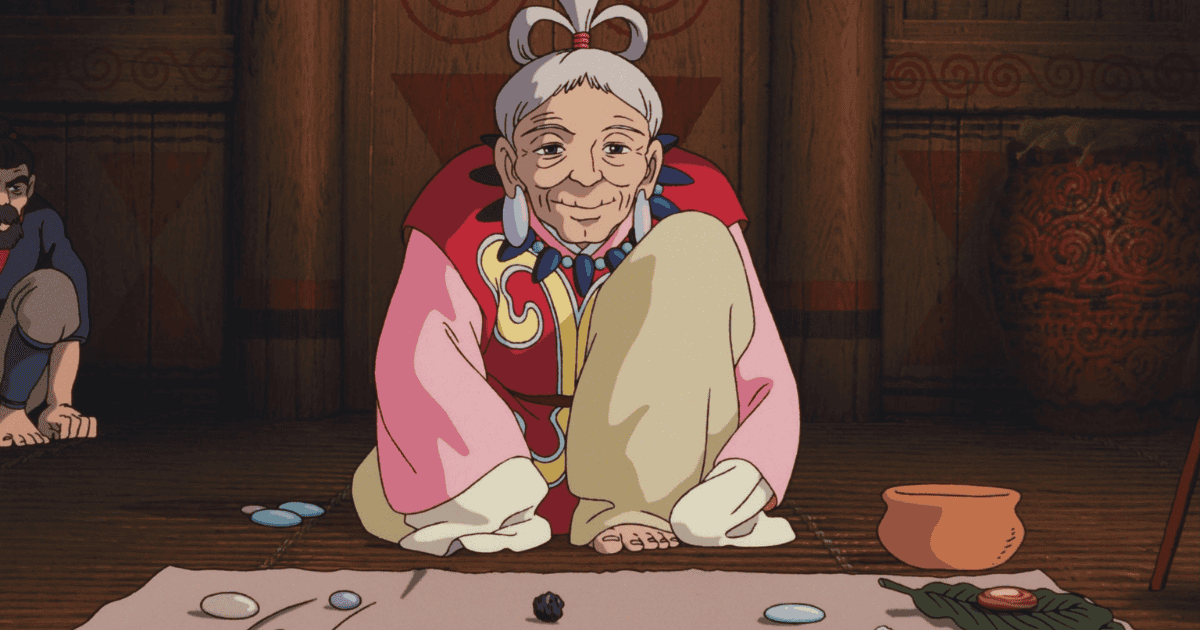
Hii-sama’s Basic Information
She is the oracle of Ashitaka’s home village, but she appears to be the de facto leader.
She has a gentle demeanor, but she is also the person who effectively told Ashitaka to “leave the village!”
The story of Princess Mononoke begins with Ashitaka’s exile from his village, but there is a strange part in the depiction leading up to his exile. That is, the mystery that the old man in the watchtower and Hii-sama somehow know about the Deamon.
The old man’s reaction, in particular, is quick, and it was definitely depicted as if he had seen it before.
Does this mean that that village, or the region including that village, has been attacked by a Deamon before?
This is something that cannot be helped as it does not go beyond the realm of imagination, but,
Nago | Voice Actor: John DiMaggio
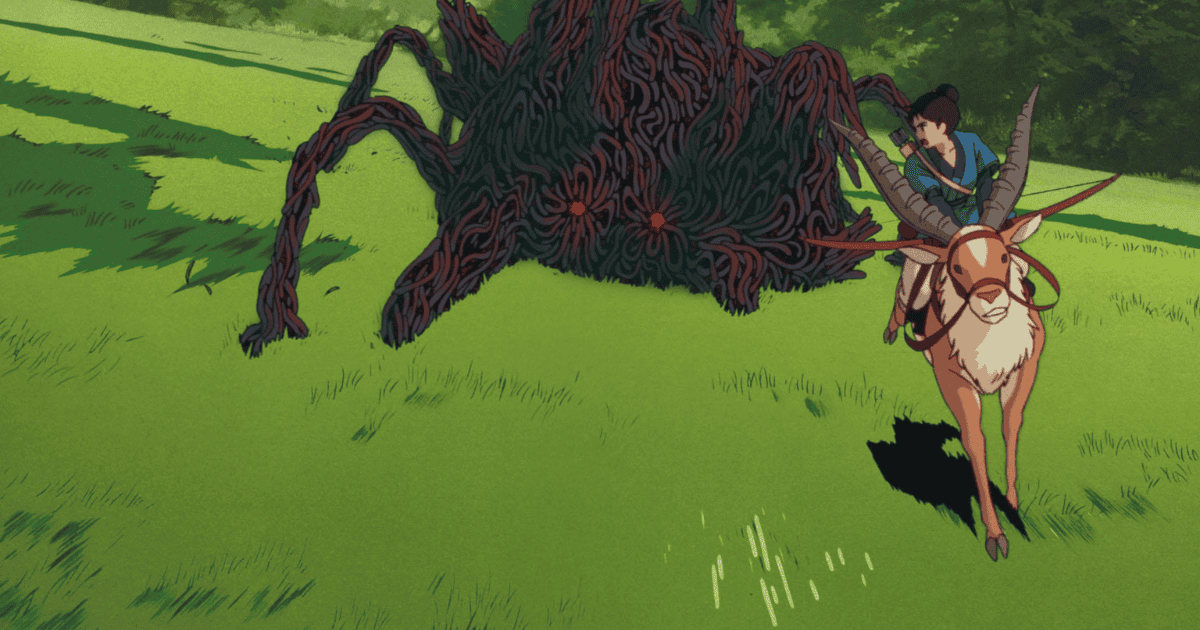
Nago’s Basic Information
The Deamon that attacked Ashitaka’s village. Its true identity is the mountain god (boar god) that leads the boars living in the “Forest of the Forest Spirit.” Slaying Nago the Boar God, who had become a Deamon, and receiving its curse was the beginning of Princess Mononoke for Ashitaka.
The very person who drove Nago to rout was Lady Eboshi, and the firearm she shot gave Nago the fear of death and despair. Based on the statements of the boars that Okkoto brought to the “Forest of the Forest Spirit,” for Nago, “routing” was a shameful act to be avoided more than death.
That humiliation, the sadness of being driven from the forest, and the fear of death turned the proud Nago into a Deamon.
Also, as Lady Eboshi herself said, Nago should have directed his hatred towards Lady Eboshi, but after becoming a Deamon, Nago for some reason rushed east, away from Lady Eboshi, and spread his hatred towards “humanity itself” (there may have been some destroyed villages).
It seems like an “unreasonable hatred,” but hatred is like that in the first place, and those driven by hatred unconsciously involve those around them while exhausting and destroying themselves.
It was because he knew this that Ashitaka tried so hard to endure, so as not to let the hatred within him explode. If Ashitaka had not met San, he might have lost his reason to face that hatred and, at some point, become a Deamon that destroys Tatara Ba.
Time and again, for Ashitaka, San was truly a “gospel.”
Head Ox-driver | Voice Actor: John Hostetter
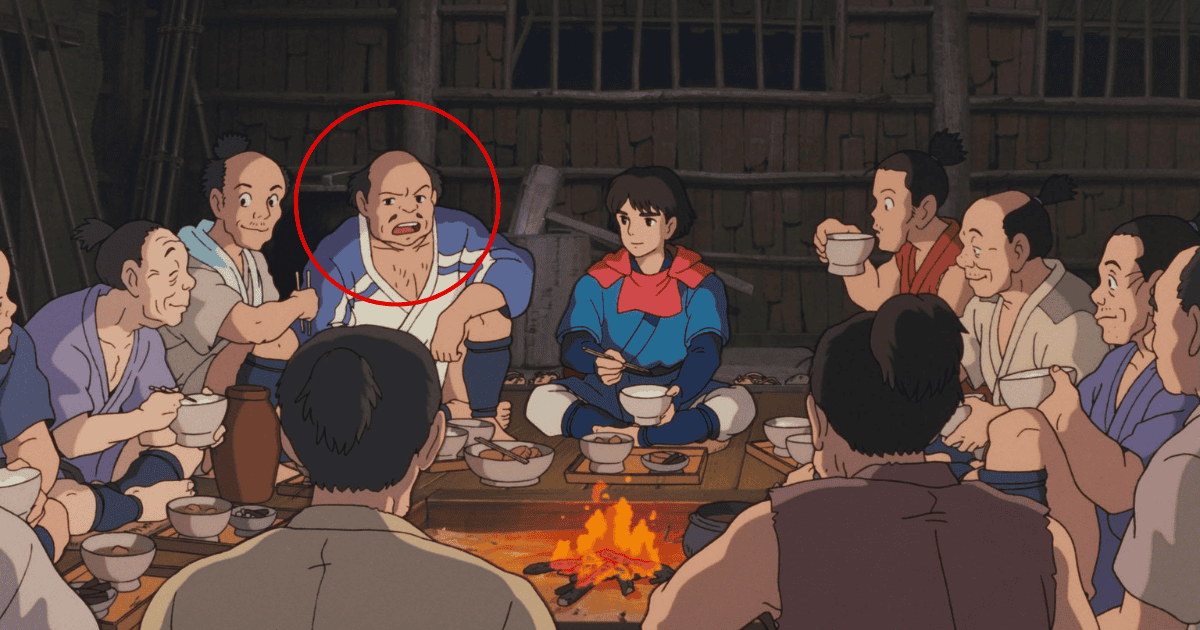
Head Ox-driver’s Basic Information
The leader of the ox-drivers of Tatara Ba. He has a favorable attitude towards Ashitaka, who saved his companions like Kohroku who had fallen to the bottom of the valley. He has a stern face but is also a compassionate person.
Leader of the Lepers | Voice Actor: (N/A)
Leader of the Lepers’ Basic Information
A person who was bedridden with illness in Lady Eboshi’s “secret garden.” He is the leader of the group who are also working on improving firearms while suffering from the same illness.
According to his words, Lady Eboshi not only took them in and sheltered them but also washed their bodies and properly cared for them. For them, who must have been despised by people because of their illness, Lady Eboshi’s existence must have been very significant.
Basically, they live in a place isolated from the ox-drivers and guards even in Tatara Ba, but the people of Tatara Ba do not seem to have any discriminatory feelings towards them. At least Toki is depicted as having a genuine relationship with one of them in the scene where they fight against the attack from the samurai at the end of the story.
Although they are in an extremely difficult situation, there is a depiction at the end of the story that suggests their illness was healed by being exposed to the power of the Forest Spirit who had regained its head.
This is a very moving depiction in the very harsh story of Princess Mononoke, but the reason it is not prominently featured is probably because our society has not yet been able to heal all “illnesses.”
Kiyo | Voice Actor: (N/A)
Kiyo’s Basic Information
You probably don’t know who “Kiyo” is just by her name, but she is the person who accidentally shot Ashitaka.
Jibashiri | Voice Actor: (N/A)
Jibashiri’s Basic Information
They wear animal skins and smear themselves with blood to move around without being detected by the spirits of the mountains as humans.
While participating in the operation to obtain the Forest Spirit’s head with Jigo, they also possess a certain kind of piety, as can be seen from their statement, “Seeing the Forest Spirit will make you blind.”
It seems like a contradiction at first glance, but this is like a hunter offering a prayer to the mountain god, and they probably live a life that does not cross the line due to such prayers and faith.
Also, their appearance in the film, running through the mountains wearing boar skins, is superhuman, and I have no idea how they achieve that movement. I wish someone would try to replicate it.
The images used in this article are from “Studio Ghibli Works Still Images“.
About the Author
Recent Posts
- 2025-10-21
Indiana Jones and the Dial of Destiny(2023): Full Synopsis & Analysis: Indy’s True Motive and the Enigma of Helena - 2025-10-15
Indiana Jones and the Dial of Destiny(2023):Historical Background-WWII, the Real Dr. Schmidt, the Siege of Syracuse, and the Antikythera Mechanism - 2025-10-08
Why Does Children Who Chase Lost Voices Feel So Ghibli-esque? [Makoto Shinkai’s “Tale of Farewell”] - 2025-10-07
5 Centimeters per Second: Characters, Voice Actors, Character Analysis and Character Map - 2025-10-06
5 Centimeters per Second: Full Synopsis, Analysis, Ending Explained & Character Map (Spoilers)

